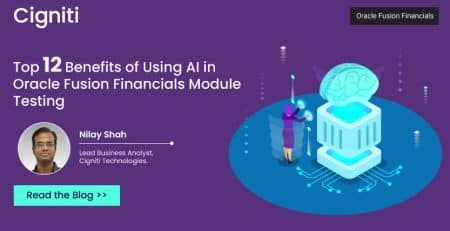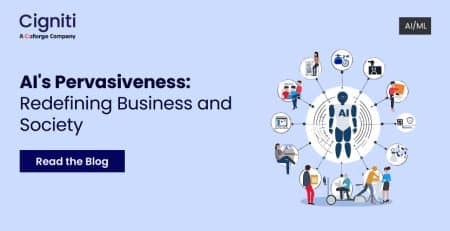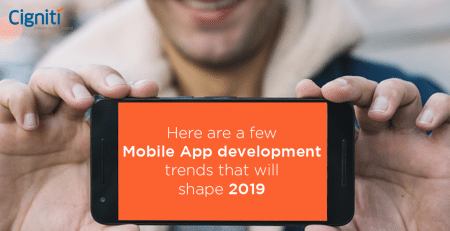AI is here to stay. It’s time the Pharma industry woke up to it
|
Listen on the go!
|
When discussing the future of any industry, it is difficult to avoid mentioning Artificial Intelligence (AI).
AI has revolutionized how scientists discover new treatments, combat diseases, and more in the pharmaceutical and biotech industries in the last five years.
To help deliver safe, reliable pharmaceuticals to the market, the pharmaceutical industry has traditionally depended on cutting-edge technologies.
AI is a term used in the pharmaceutical industry to describe the use of automated algorithms to do tasks that previously required human intelligence.
With the latest outbreak, pharmaceutical companies are under more pressure than ever to produce treatments and vaccines to market as soon as possible.
According to Gartner, “As far as enterprise artificial intelligence projects are concerned, the COVID-19 pandemic was just a minor bump in the road. 24% of business and IT professionals surveyed said they increased AI investment during the pandemic, and 42% kept investment at the same level. Driving current AI investment has been customer experience and retention, revenue growth, and cost optimization. Those areas of focus are likely to continue as new projects are initiated in the post-pandemic business world, which will be rich with AI investment.”
In the pharmaceutical and customer healthcare businesses, AI and machine learning (ML) have proven to be crucial.
COVID and the race to discover viable vaccines are fostering the use of AI and ML in this pandemic.
Top-Level usage in the pharmaceutical and consumer healthcare industries
The following are the top-level usages in the pharmaceutical and consumer healthcare businesses:
- Prognostic Prediction – One of the primary examples of this subject is envisaging an epidemic. ML and AI are also being used to track and predict disease outbreaks and seasonal illnesses around the world. Based on the projected intensity, a predictive forecast assists us in planning our supply chain to ensure that we have the correct inventory at the right time and in the right quantity.
- Tailored Treatment/Interactive Alteration/Digital Therapeutics – This can be used to aid and recognize people in order to deliver primary vision into a illness – such as gum disease – accurately classify cutaneous skin disorders, suggest primary treatment options with over-the-counter medication, and serve as an ancillary tool to improve clinicians’ diagnostic accuracy, or improve educational and clinical decisions made by your child’s teacher.
- Drug Detection and Manufacturing – It helps in the initial screening of medicinal compounds for the projected success rate based on biological parameters in drug discovery and manufacturing. RNA and DNA are quickly measured. Precision medicine, also known as next-generation sequencing, aids in the identification of new pharmaceuticals and personalized treatments for particular patients.
- Diagnosis/Identify diseases – This can include everything from oncology to COVID to ocular degeneration.
- Clinical Trials – Recognizing the best contender for the study based on their medical history, clinical conditions, and other characteristics, as well as infection rates, demography, and ethnicity to represent the individuals who will be most affected.
We see AI and ML being used in a variety of areas for pharmaceutical and healthcare firms, including Supply Chain, Customer Service, Martech, AdTech, and sales.
While the top-level usage of AI in the pharma industry is huge, larger establishments face a few challenges while adopting AI.
Challenges in adopting AI at larger enterprises
The following are some of the major obstacles to AI adoption in larger organizations:
Data Challenges – Data quantity and quality – A training data set containing a minimum of 2 to 3 years of historical data is required for every machine learning model to perform effectively. Due to mergers and acquisitions, prior data management, or the lack of a prior source of data, this is the most crucial difficulty we find in large enterprises.
Challenges with Skills – Finding the correct resource with the right background might be difficult. We have a limited pool of data science experts in the market, which causes delays in hiring and training them to grow many AI initiatives.
According to Erick Brethenoux, research vice president at Gartner, “The biggest misconception in the journey to successfully scaling AI is the search for ‘unicorns,’ or the perfect combination of AI, business and IT skills all present in a single resource. Since this is impossible to fulfill, focus instead on bringing together a balanced combination of such skills to ensure results. AI talent is multiple things, and business professionals, whether they consider themselves at risk for AI-driven obsolescence or not, should consider training in some way that makes them valuable for a future of automated work.”
Commercial Value – Larger companies are having difficulty demonstrating the business value of AI programs. We’d like to deploy more cognitive services based on chatbots, for example. Adaptability, on the other hand, is insignificant, making it difficult to demonstrate the worth of such endeavors.
Explainability – Many “black box” models result in a conclusion, such as a forecast, but no explanation. You’re not likely to challenge the system’s conclusion if it coincides with what you already know and believe is correct. But what if you have a disagreement? You’re curious as to how the choice was reached. In many circumstances, just making a decision isn’t enough. When it comes to their patients’ health, doctors cannot rely only on the system’s recommendations.
Local interpretable model-agnostic explanations (LIME) is one method for increasing model transparency.
If AI determines that a patient has the flu, it will also reveal which data points were used to make that determination: sneezing and headaches, but not the patient’s age or weight, for example.
When we’re provided the reasoning behind a conclusion, it’s much easier to determine how much we can trust the model.
Changing the Pharmacy Industry’s Future
The application of AI allows pharmacists to play a more active role in patient care, which is critical as value-based care models continue to dominate the health-care industry.
Managing medicine inventories can be overwhelming for pharmacists.
According to McKinsey, “Artificial intelligence is here to stay. Machine Learning and Big Data in the pharmacy and medical space might be worth $100 billion each year. Although some remain wary of AI’s promise, it’s evident that the pharmaceutical business is uniquely positioned to benefit and grow as a result of its implementation.”
Despite the fact that pharmacists are highly trained in patient care, they are frequently forced to function as de facto supply chain experts in order to keep their hospitals stocked with the pharmaceuticals they require.
Pharmacists can focus their efforts on patient care with the use of artificial intelligence, as some states have recognized in an official capacity.
Conclusion
While leveraging AI for testing apps for quality, enterprises may face multiple challenges, such as identifying the exact use cases, lack of awareness about what really needs to be done, verifying the app’s behavior based on the data that has been input, testing apps for functionality, performance, scalability, security, & more.
Cigniti’s extensive experience in the use of AI, ML, & analytics helps enterprises improve their automation frameworks & QA practices. Cigniti provides AI/ML-led testing and performance engineering services for your QA framework through implementation of its next gen IP, BlueSwan™.
With a strong focus on AI algorithms for test suite optimization, defect analytics, customer sentiment analytics, scenario traceability, integrated requirements traceability matrix (RTM), rapid impact analysis, comprehensive documentation and log analytics, at Cigniti, we have established a 4-pronged AI-led testing approach that includes:
- Discover – Smart asset creation using data repositories including defects, tickets, logs etc. for analysis.
- Learn – Identify relationships between test assets such as defects and software requirements for insights.
- Sense – Predict occurrence of an incident, impact, and likelihood led by analytics and insights.
- Respond – Respond to an incident, input the resolution and results for continuous learning.
Use our expertise in defect predictive analytics and test execution to ensure 100% test coverage for your AI-based applications.





Leave a Reply